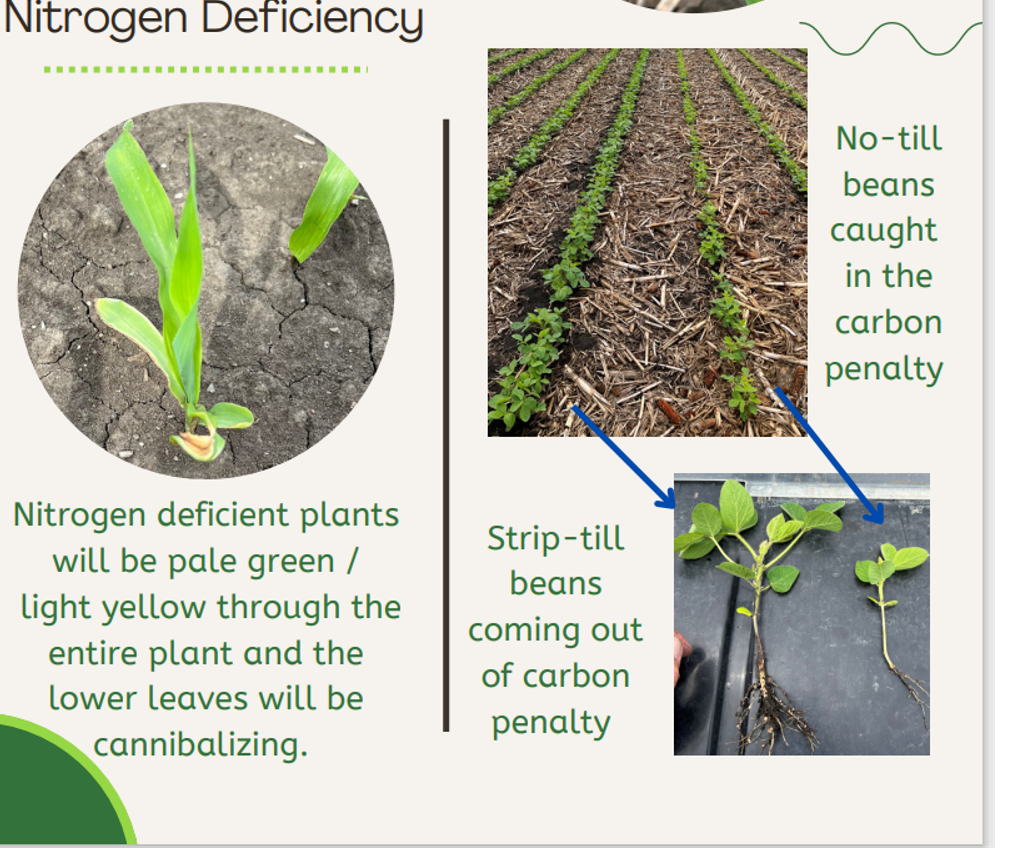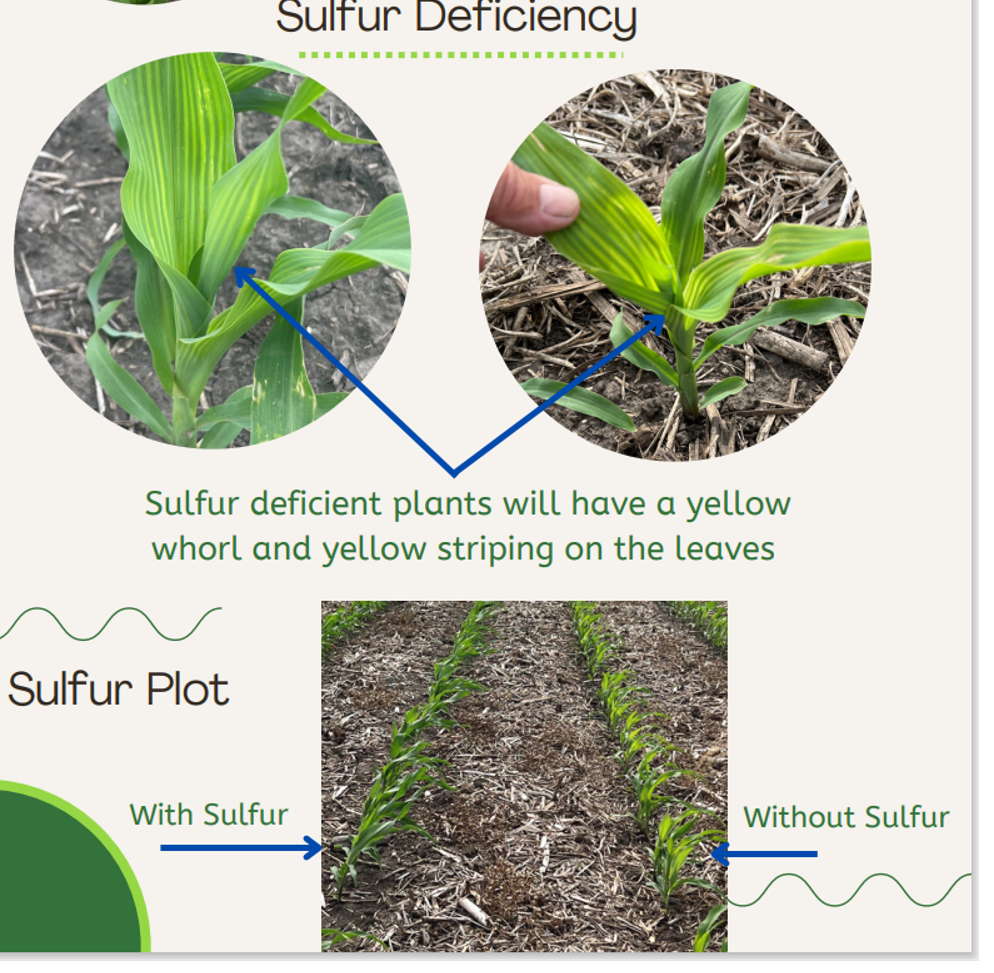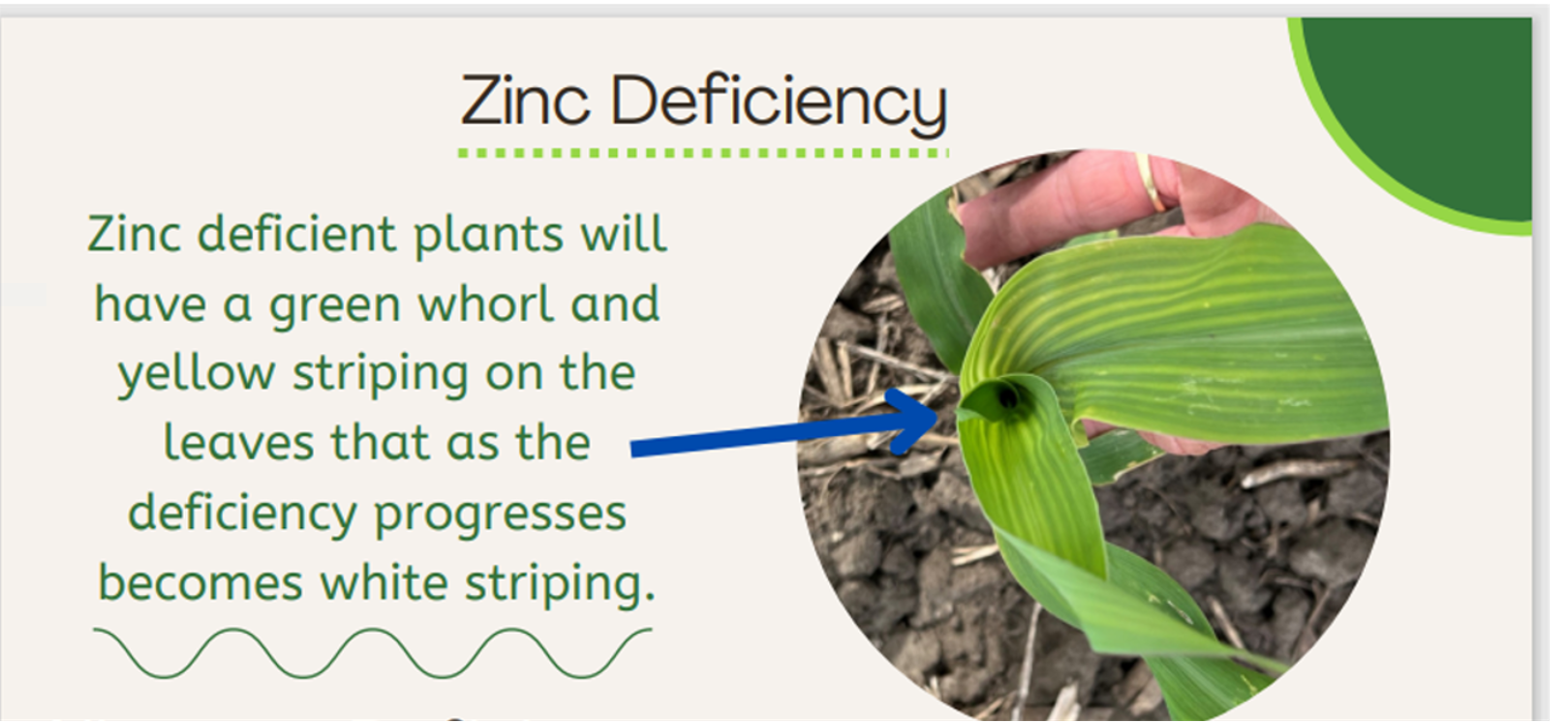Ferrie: That Yellowing and Striping You're Seeing are likely Zinc and Sulfur Deficiencies

Farmers are reporting fields of corn with “yellowing and striping” to Ken Ferrie, Farm Journal Field Agronomist and owner of Crop-Tech Consulting, Heyworth, Ill.
“This is a factor resulting from what we call the carbon penalty – your crop is competing with microbes that are breaking down last year’s residue for nitrogen (N), sulfur (S), phosphate (P), and zinc (Zn),” he explains.
Match Visual Symptoms To The Deficiency
Ferrie says the crops he’s looked at this week are primarily exhibiting zinc and sulfur deficiencies at this point – not nitrogen. Here’s what to look for to determine what is happening in your fields:
Nitrogen – If N is the deficiency, you will see yellowing from the top to the bottom of the corn plants.

Corn-on-corn acres are exhibiting the most N stress, and Ferrie says sidedress applications need to start in those fields sooner and not later.
Ferrie adds that some soybean crops are also exhibiting signs of a carbon penalty, but he says they will not be penalized yield-wise.
Sulfur – With an S deficiency, the bottom of the plants will be green but the whorl will be yellow, and there will be some striping on the plant as well.

Acid rain, containing sulfur emitted by industry, used to be farmers’ main source of sulfur—and it was free. But the Clean Air Act of 1972 drastically reduced the amount of acid rain falling on fields.
"Also, today’s fertilizers contain fewer impurities," Ferrie points out. "The old single superphosphate your grandpa applied contained 12% sulfur. Modern pesticides contain less sulfur, and we seldom burn crop residue anymore, which released sulfur into the atmosphere. Today’s higher yields also remove more sulfur."
A bushel of corn contains 0.08 lb. of sulfur in the grain and 0.09 lb. in the stalk, for a total of 0.17 lb. "So 200-bu. corn removes 34 lb. of sulfur, or 102 lb. of sulfate [the form taken up by plants] per acre," Ferrie says. "Your challenge is to figure out how much sulfur the soil will provide and how to supplement the rest."
Zinc – With a Zn deficiency, the bottom of the plant and the whorl will be green. However, you will see 
“So, it's the actual high -phosphate condition of the starter that’s causing the zinc striping,” he says. “Zinc striping is the easiest to fix by adding zinc to the starter applications.”
What To Do Now
Ferrie says in many cornfields, these deficiencies – and the visual symptoms of them – will disappear with more growth in the next week or two.
“As the corn plant pushes out a bigger root system, it'll find enough nutrients to fix these deficiencies,” he says.
If that is not the case, let Ferrie or your agronomist know what you’re observing so you can determine next steps.
Listen to Ferrie’s complete Boots In The Field podcast here:







